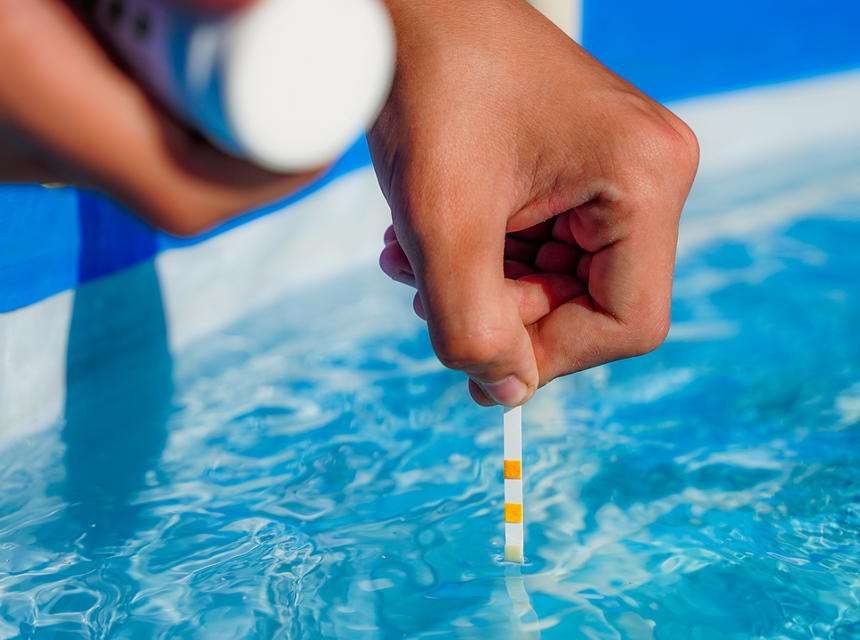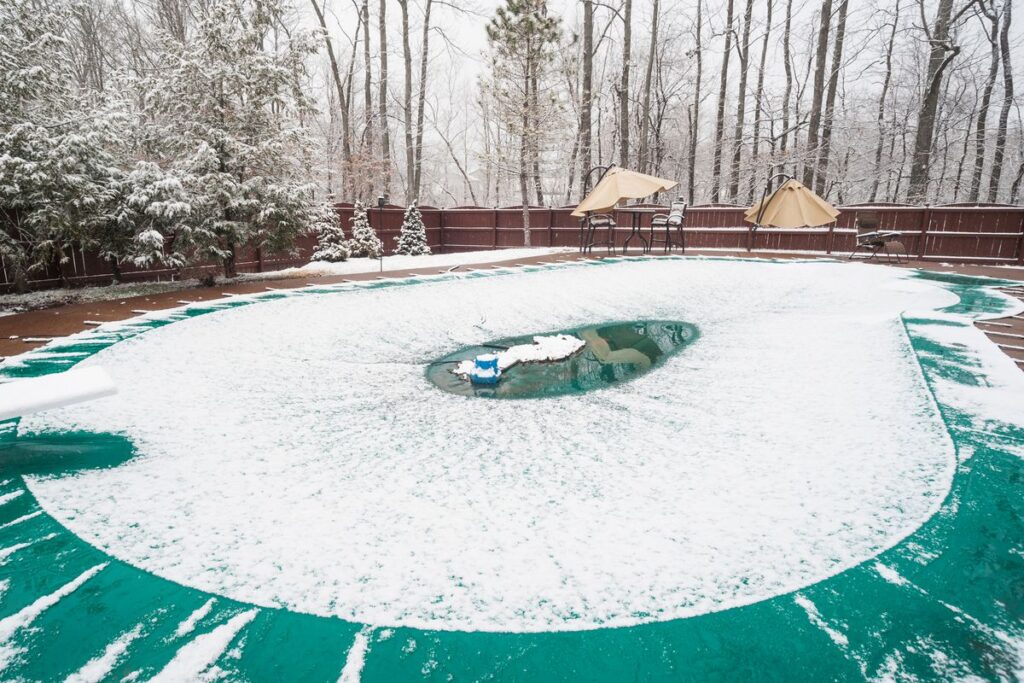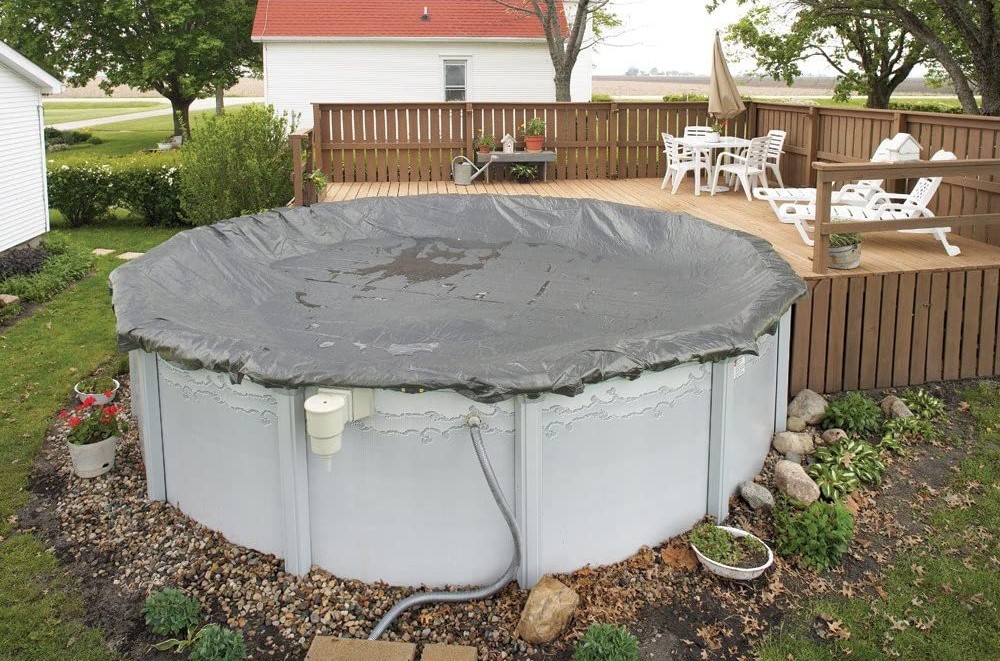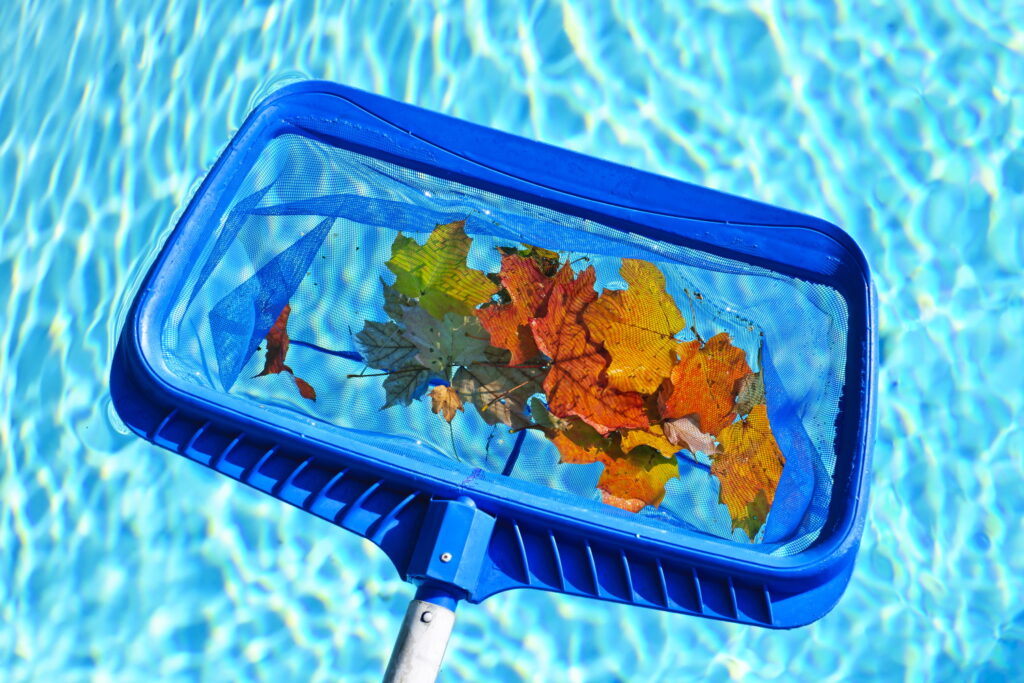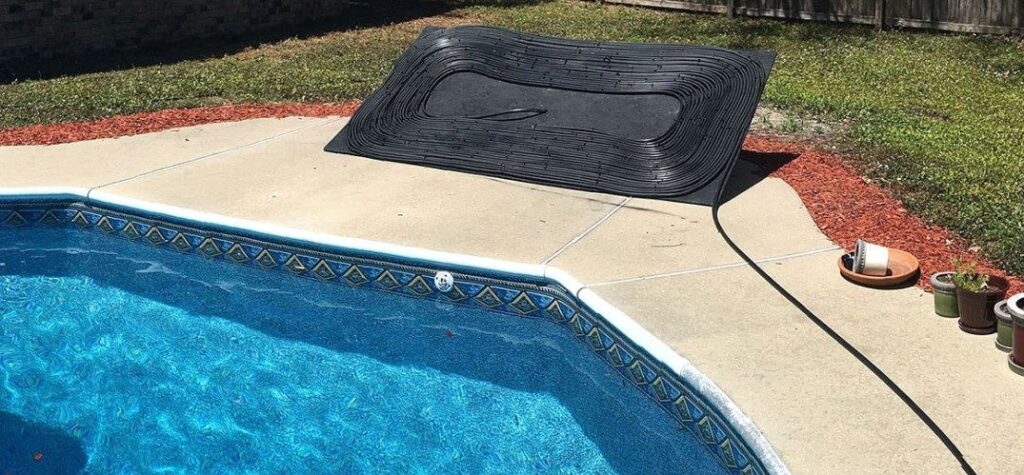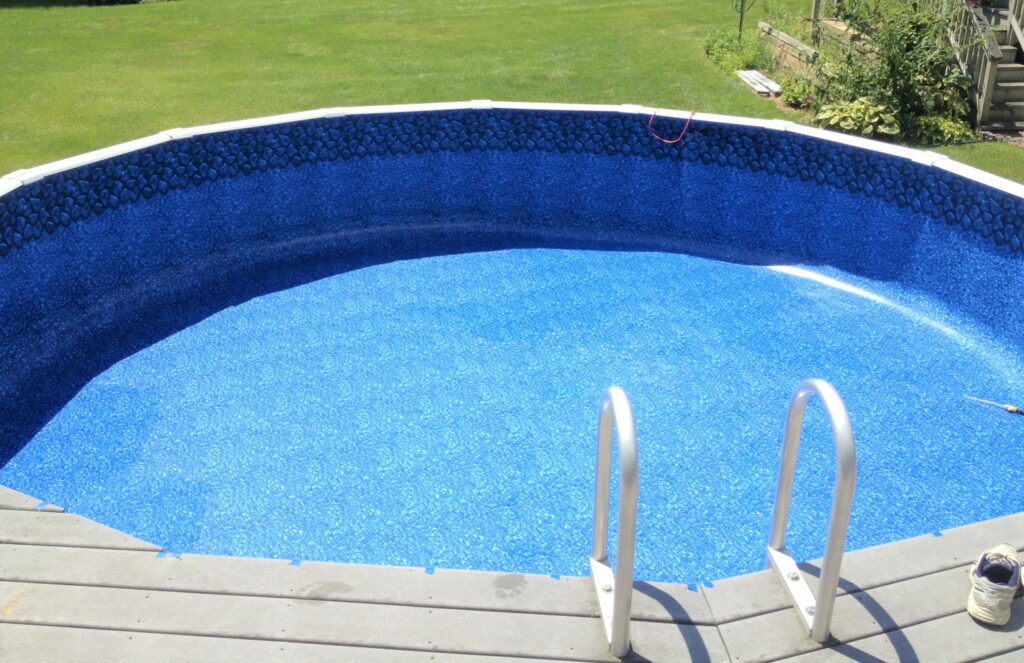Shocking a pool should be part of regular maintenance to prevent algae and bacteria from growing in the water, especially in the warm months. In essence, pool shocking involves balancing chlorine levels to keep the water safe for swimming. As a pool owner, you must learn how to shock a pool or get a pool service professional to do it.
Pool shocking is crucial for sanitizing the pool. Chlorine in the pool water gets bound to ammonia from swimmers’ sunscreen lotions, fertilizers, bird droppings and other waste materials from the environment to form chloramines. The only way to release the bound chloramines is by shocking the pool at least once weekly in the swimming season. When chlorine levels are low, you can use a chlorine-based shock; when they are high, you can use a chlorine-free shock to oxidize the contaminants in the water.
A pool shock is a chemical compound that oxidizes chloramines in the pool water. According to an article by the Centers for Disease Control and Prevention (CDSC) Trusted Source Chloramines and Pool Operation | Healthy Swimming | Healthy Water | CDC www.cdc.gov , chloramines are a type of combined Chlorine that form in water and off gas into the air. They include, dichloramine, and trichloramine, and they form when Chlorine mixes with ammonia in sweat, urine, and oils from swimmers’ bodies. Chloramines can irritate the skin, eyes, and respiratory tract when they off gas into the air.
As earlier mentioned, shocking the pool adds enough Chlorine to the water to destroy chloramines. It also helps clear up cloudy water and kill pool algae growth. When you go to a public pool and get a strong chlorine smell, just know it comes from chloramines, a solid sign of improperly sanitized water.
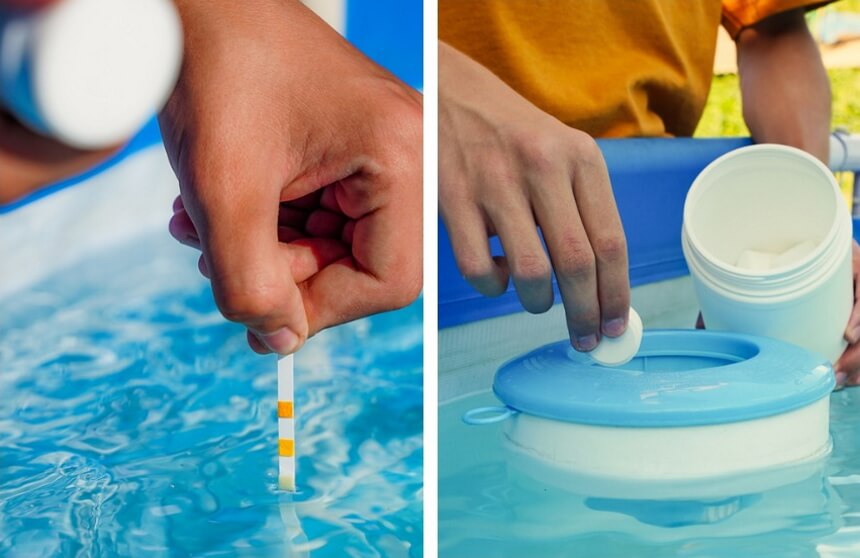
Knowing the different types of Chlorine will help you understand pool shocking better.
Free Available Chlorine: This is the Chlorine actively sanitizing your pool’s water. For the pool shock to work, the free chlorine level must always be between one and three parts per million.
Combined Chlorine: This is Chlorine that has lost its sanitizing power. Although it is still in the water, it is all used up. The combined chlorine level should be below 0.2 parts per million.
Total Available Chlorine: This is all the Chlorine in your pool’s water, including combined Chlorine and Free Chlorine. Most pool water testing kits can measure total Chlorine and Free Chlorine; therefore, you can get combined Chlorine by subtracting the free Chlorine from the total Chlorine.
When shocking your pool, your aim should be reaching breakpoint chlorination. At breakpoint chlorination, you have enough free Chlorine to break the molecular bonds of chloramine, and you need ten times the amount of combined Chlorine to get the balance. Failing to hit the breakpoint every time you shock your pool may result in higher chloramine levels in your pool.

When it comes to pumping up your pool’s chlorine levels, you are spoilt for choice with all the available products. The only thing you shouldn’t do is use regular pool chlorine tablets to shock your pool. Here are the most common types of pool shock;
According to an article by the National Library of Medicine (NIH), Trusted Source Calcium hypochlorite | Ca(ClO)2 - PubChem Calcium hypochlorite | Ca(ClO)2 or CaCl2O2 | CID 24504 – structure, chemical names, physical and chemical properties, classification, patents, literature, biological activities, safety/hazards/toxicity information, supplier lists, and more. pubchem.ncbi.nlm.nih.gov Calcium hypochlorite is a powerful oxidizing agent in water. It is the most popular pool shock because it is inexpensive and convenient and has been in the market for decades.
Most commercial versions of Calcium Hypochlorite have 65 to 75% of Chlorine. You have to be extra careful if your pool water already has calcium because Calcium Hypochlorite adds about 0.8 parts per million of calcium for every part of free Chlorine. Also, you must dissolve it before adding it to your pool after dusk and wait eight hours before you can safely swim.
Moreover, Cal-hypo has a high pH and will temporarily raise your pool’s levels. It is an excellent choice for pools with normal or low pH levels.
Lithium hypochlorite is a bit pricier than calcium hypochlorite, but it is worth buying if your pool water already has high calcium levels. Also, unlike calcium hypochlorite, you don’t have to dissolve it in water before applying it to the pool, as it dissolves more quickly. On the flip side, Lithium hypochlorite can be harmful to aquatic life. Therefore, you must be extra cautious when disposing of recently treated pool water.
The commercial versions of Lithium hypochlorite contain up to 35% of Chlorine. The rising cost of lithium has made Lithium hypochlorite rare as most of it is now used to make lithium batteries. If you can get your hands on some, add it to the pool after dusk, then wait eight hours before swimming.
Dichlor is short for Sodium dichloro-s-triazinetrone or dichloroisocyanuric acid. The pool shock popularly goes by Dichlor because it is easier to pronounce and use. Depending on the brand, the shock contains between 50 and 60% chlorine, and you can add it to the pool directly.
The shock is ideal for regular Chlorine and shock treatments in traditional Chlorine and saltwater pools. It contains CYA and thus lasts longer in the pool water than other shocks like Cal-hypo. You have to be careful with the CYA levels, though. You may be forced to get a CYA reducer or drain the pool if not monitored well. Like other pool shocks, you can only use Dichlor after dusk and wait to swim after eight hours.
This is the best option if you want to shock your pool and take a dip soon after. It is the most ideal pool shock for saltwater pools. Non-chlorine pool shock does not rely on Chlorine, instead, it uses Potassium peroxymonosulfate to oxidize the contaminants in the pool water. Oxidizing the contaminants free up the Chlorine already present in the water to disinfect the pool. Compared to other pool shocks, non-chlorine shocks don’t affect the pH levels of the pool. What’s more, it is incredibly affordable and fast acting. You can swim 15 minutes after adding it to the pool, and you don’t have to wait until after dusk to treat the pool.
Proper maintenance of a pool involves shocking or oxidizing your pool’s water at least once every week with either chlorine or non-chlorine shock, depending on the pool’s tested chlorine levels. During the swimming season, you need to keep a keen eye on the free Chlorine and total chlorine levels so that you know when to shock the pool.
Here are a Few Scenarios That Call for Pool Shocking:
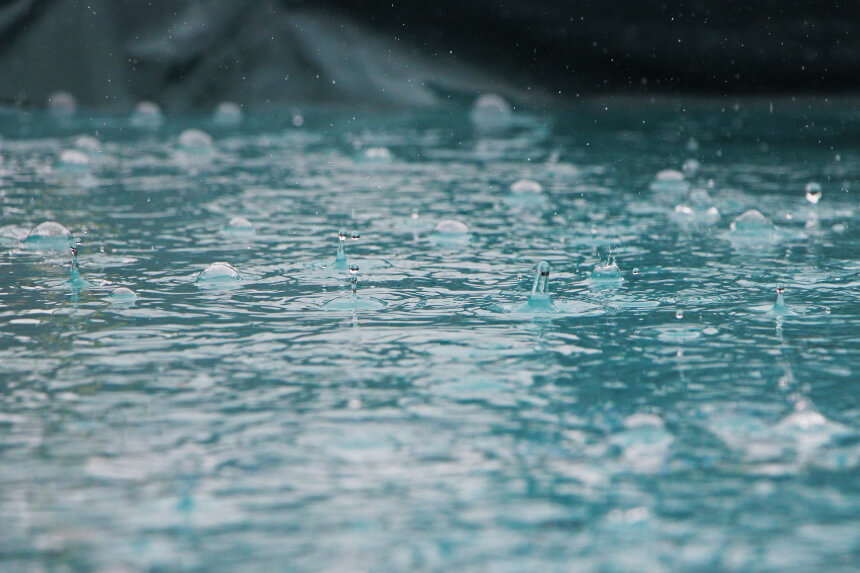
The heavy rain and strong winds that come with a big storm can contaminate your pool with dust, leaves, debris, and dirty flowing rainwater. Pool shocking is, therefore, crucial to mitigate the effects of bad weather on your pool.
When opening your pool for warmer weather, it is good practice to shock the pool after balancing the water chemistry so that organic contaminants like algae and bacteria are oxidized. Shocking also clarifies the water. Shocking when closing the pool will play a similar role of fighting off germs and algae during the winter period.
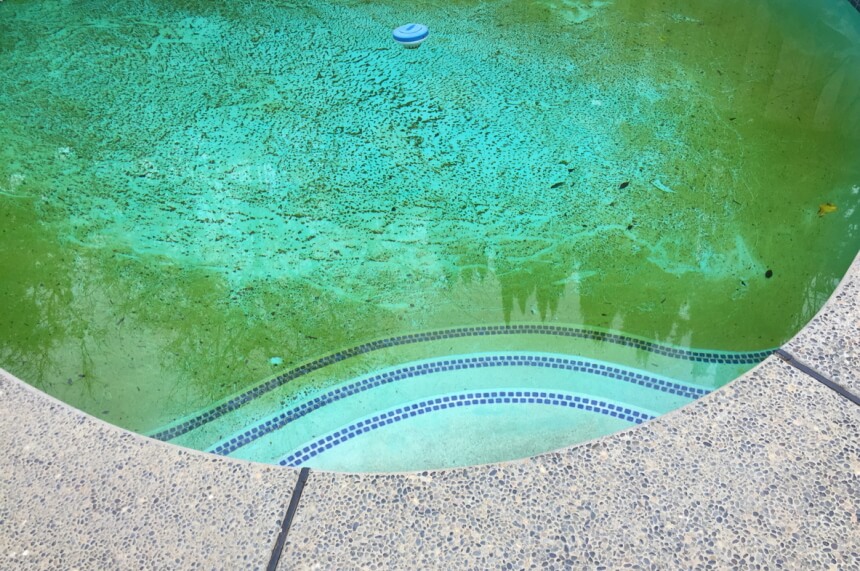
Pool water gets contaminated quicker when many people are swimming. To keep the water sanitized, shock the pool after every big pool event or any other unexpected contaminations.

If you notice a fecal incident or any other unsanitary incident in your pool, close it off for swimming then remove all the debris before super-chlorinating it to kill the germs and break down all organic contaminants.
Before using a chlorine-based pool shock, be sure to read all the instructions. Most manufacturers insist on using chlorine shocks after dusk because the sun’s UV rays can burn unstabilized Chlorine, thus rendering the pool shock ineffective.
To maintain your sanitized pool water chemistry, it would be best if you shocked the pool at least one every week, especially if there is heavy usage of the pool. The more often you use the pool, the more often you should shock it. In addition to the weekly socking, you may have to do extra shocks in case there is a fecal incident, a heavy rainstorm or strong winds, or a major water change.
Here is how to shock a pool like a pro;

This is a critical step as it lets you know the chemical situation of your pool’s water. Use a water test kit or liquid testing kit to test the pool water. If the free chlorine level is lower than the total chlorine level, then the combined chlorine level is off and it is therefore time to shock your pool.
The pH levels and alkalinity also matter as they balance the pool water chemistry so that the shock treatment can be effective. The ideal pH level is 7.4 to 7.6 and alkalinity between 100 and 150 parts per million. If the pH levels are off, use chemicals to achieve the ideal balance.
You should also check the calcium level in your pool to ensure it is in balance with the pH and alkaline levels. If the pool has fiberglass liner or vinyl lining, ensure the calcium hardness level is not less than 175 parts per million (ppm) or more than 225 ppm. For a plaster or concrete pool, the calcium levels should be between 200 and 275ppm.
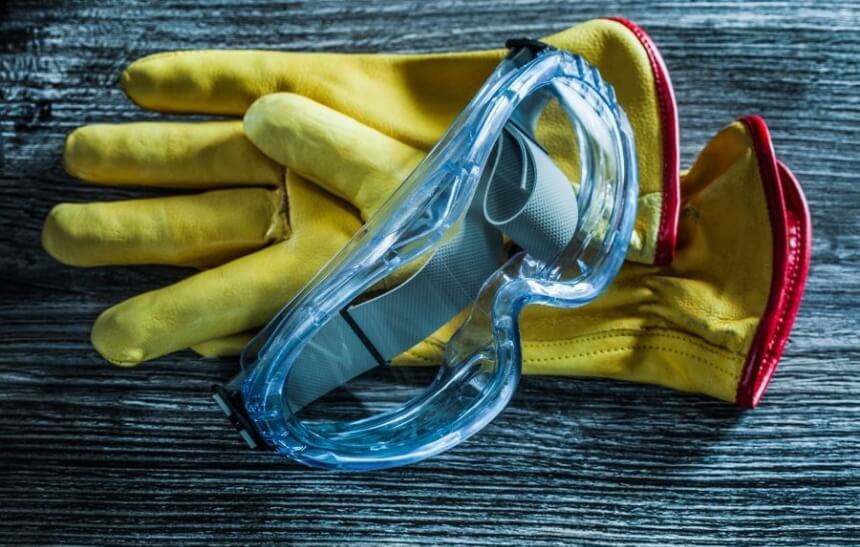
You have to practice safety protocols when handling pool chemicals, as they are toxic. According to an article by Washington Post Trusted Source Swimming pool chemicals can be dangerous - The Washington Post More than half of these injuries occurred at a home swimming pool, the CDC says. www.washingtonpost.com , at least 4535 people go to the emergency room yearly because of pool chemical exposure. Wear gloves, eyewear, and a mask because chlorine fumes can irritate the nasal passage and the lungs when breathed in. Put on a long-sleeved shirt and trousers that you don’t mind ruining because chlorine bleaches and you can spill some accidentally.

The rule of thumb is that 1 lb of shock effectively treats 10,000 gallons of pool water. Shock brands that come in 1 lb bag make it easier to calculate the number of bags needed for your pool.
First off, calculate your pool’s size in gallons by multiplying its volume (length x width x depth) by 7.5. Most backyard pools are usually 10,000 or 20,000 gallons large. You should also calculate the pool’s combine chlorine so that you can achieve breakpoint chlorination. Remember, you can only reach breakpoint chlorination when you add ten times the amount of combined Chlorine to reach the free chlorine levels.
To get combined chlorine level, test the water to get the free Chlorine and total chlorine levels then subtract free Chlorine from the total Chlorine.
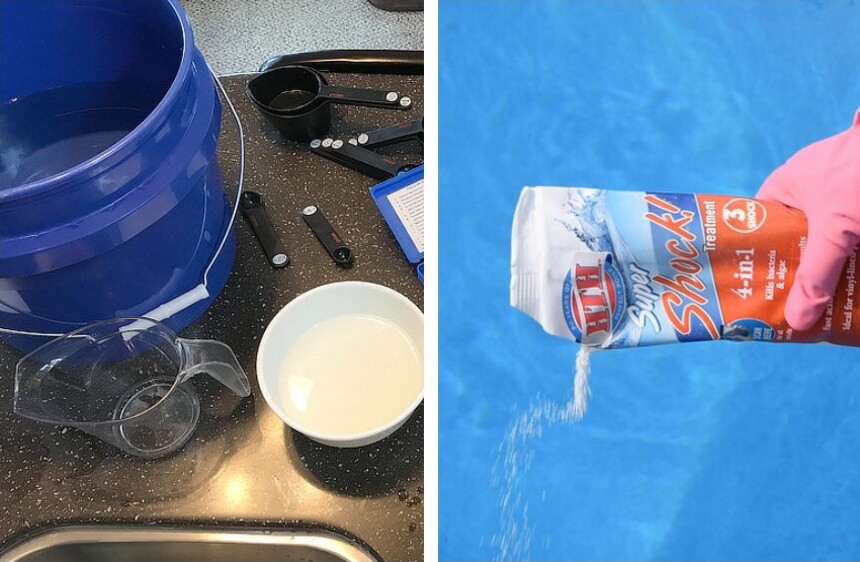
Depending on the type of pool shock you are using, you may be required to dissolve it first before adding it to the pool. Ensure you read the application instructions carefully before using the chemical.
If you are using granular shock, grab the 5-gallon bucket and fill it up ¾ way then add the bag of shock. Adding the shock to the water is the only right way, never do it the other way round.
Use a wooden stick to stir the mixture until the shock is completely dissolved so that it disperses evenly in the pool and your liner or pool finish is not damaged. As for liquid shock, you can easily add it to the pool directly but you have to be extra cautious.
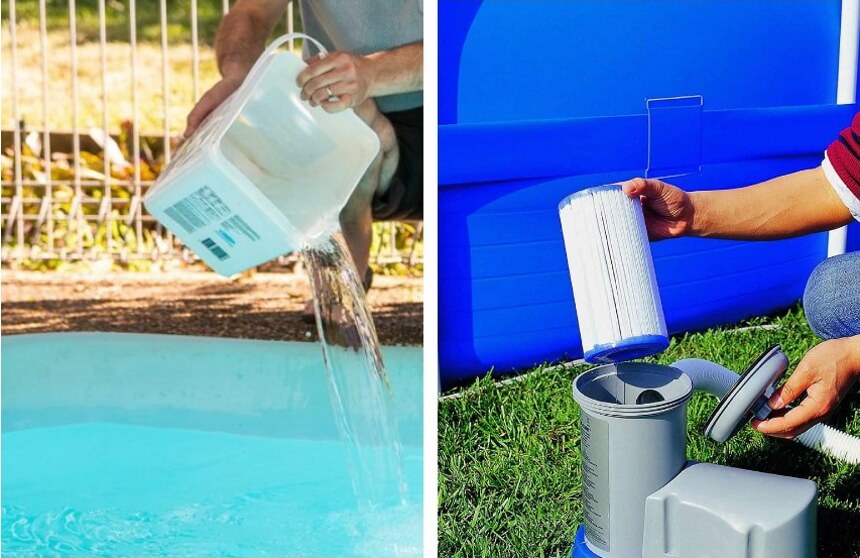
If you are using dissolved granular shock, walk around the pool’s perimeter with the bucket and pour the solution into the water slowly. This way, the return jets’ power will help circulate the solution quickly. If the granular shock doesn’t dissolve completely, you may end up with some granules on your pool’s walls or at the waterline. Grab a brush and remove the granules off the walls immediately, as they can damage the pool’s lining or finish if they stay on for too long.
As for liquid Chlorine, pour it around the pool’s deep end perimeter and close to the surface to avoid splashing. Remember the best time to shock a pool is after dusk or at night. The shock would work most efficiently at night as the sun burns off Chlorine pretty fast. Ensure your pump and filter are running all night so the pool shock can fully disperse in the water to eliminate all contaminants.
If you have a large pool; 30,000 gallons and up, repeat the super-chlorination process as necessary. Also, if your pool has a lot of algae, you may need to shock it more than once. You have to wait for 24 hours before you can repeat the shocking process because shocking is most effective after dusk.
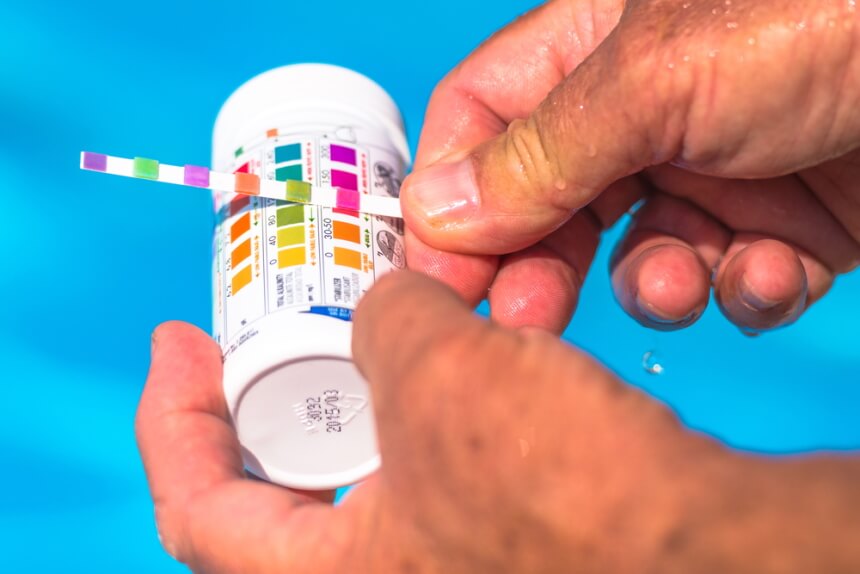
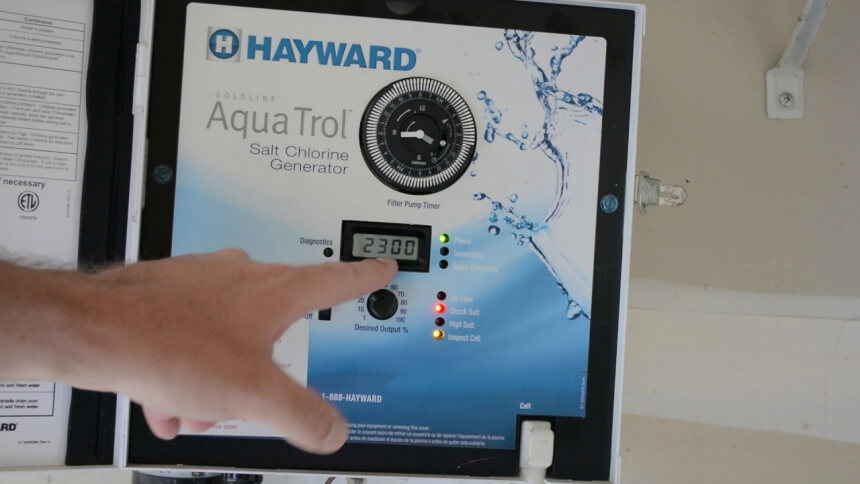
You can use the shocking procedure above to shock your saltwater pool but with Dichlor or non-chlorine shock. If you are lucky, you may not have to shock your saltwater pool with any of the methods discussed on this guide. Many saltwater pools come with a Super-chlorinate button that increases the production of Chlorine to help you reach breakpoint chlorination. If this is the case, as with a traditional pool, press the super-chlorinate button once every week or two. In case of heavy pool usage or a heavy storm shock the pool once a week.
As mentioned before, pool chemicals can be dangerous if mishandled. Chlorine can explode if stored improperly. Here are some Dos and DON’Ts for safe handling of pool chemicals during pool shocking;
Do not mix different types of pool shock as it may cause a volatile reaction. Add each chemical to the pool separately according to the instructions.
If you need to use more than one chemical, open one container at a time.
Do not add pool shock granules directly to the pool if the application instructions require you to dissolve them prior.
Do not add shock to the pool through your pool skimmer as it may mix with the Chlorine from your automatic chlorinator to form a dangerous gas that may explode.
Always wear protective gear to prevent eye and skin irritation.
If you can’t get a dust mask, avoid breathing from the open chemical containers as Chlorine can cause throat and lung irritation.
When you walk around your pool and get the typical pungent pool smell, it’s time to shock it, the pool smell is an indication of the presence of chloramines in the water, which you can get rid of with super-chlorination.
Cloudy water is also a sign that your pool needs shocking because it indicates an imbalance of the pool water chemistry. Algae blooms in your pool are also a sign that your pool needs shocking. You can get the best pool algaecide or the best pressure pool cleaner to get rid of the algae, but a shock or a triple shock can equally get rid of them.
You cannot over-shock a pool. The worst that can happen is the pool water having high chlorine levels for a few hours, but when the sun comes out, it will quickly burn off the excess Chlorine and balance the water back to a safe level for swimmers.
The best time to shock your pool is after dusk when the sun has set because the sun’s UV rays burn off Chlorine fast, and thus can reduce the effectiveness of the pool shock.
